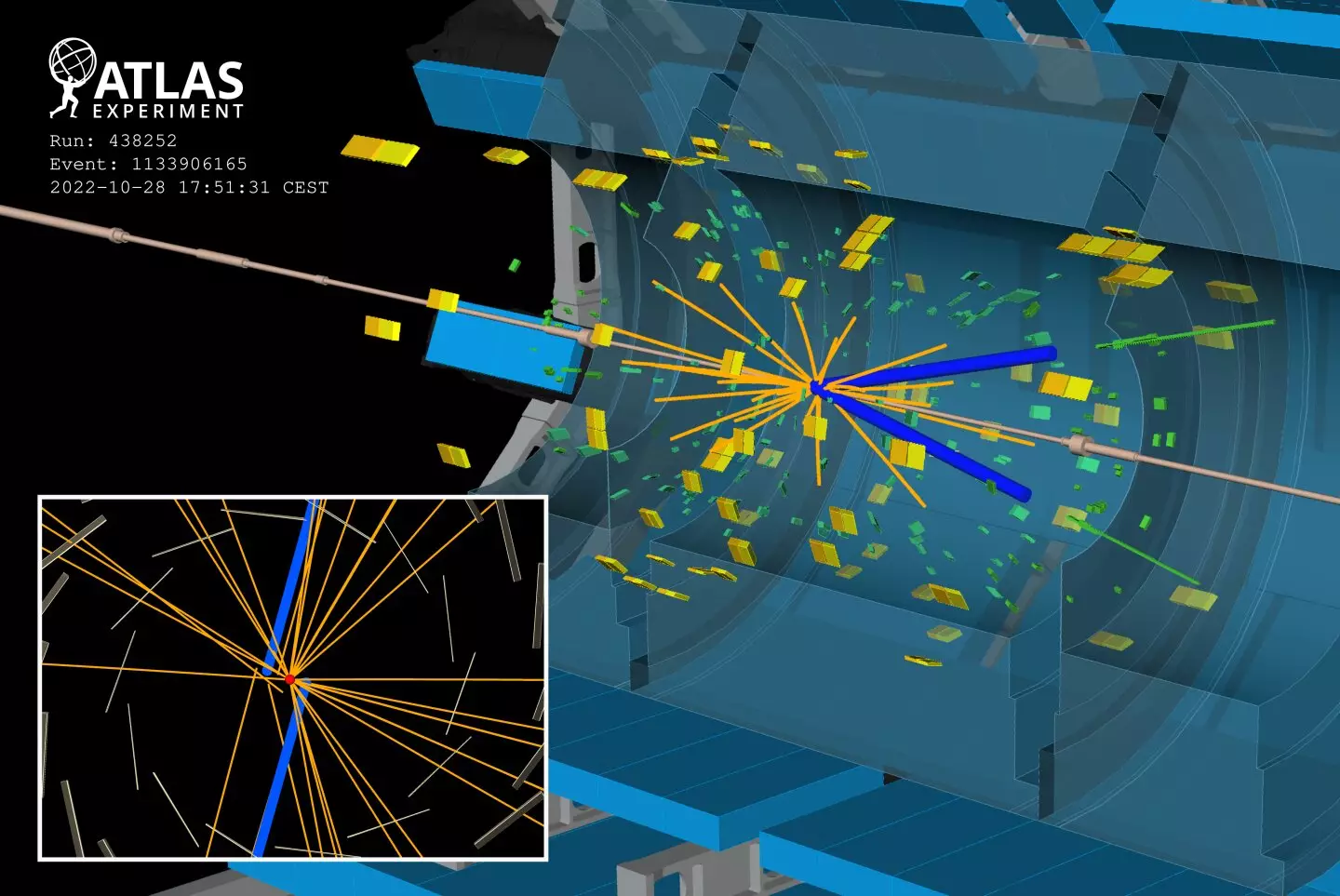The Standard Model of particle physics might be revered as the cornerstone of our understanding of matter and fundamental forces, but it remains a mere sketch in the grand portrait of the cosmos. This model effectively describes the particles and interactions we currently know, yet it leaves substantial gaps and unanswered questions. Astrophysicists and particle physicists alike recognize that what we understand today is only a fraction of the universe’s complexities. To enhance our comprehension and bridge these knowledge gaps, researchers are embarking on a quest for new physics—phenomena that could usher in a more cohesive theory encompassing the interactions of all forces at play.
Key to this ambitious venture are large-scale experiments conducted at facilities like the Large Hadron Collider (LHC) at CERN. Recent developments from the ICHEP conference in Prague illustrate the strides being made in exploring previously uncharted territories. Among the findings from the ATLAS collaboration are initial results from high-energy collision experiments focused on two tantalizing avenues: magnetic monopoles and long-lived particles.
Magnetic Monopoles: The Quest for Symmetry
Magnetic monopoles—hypothetical particles that would possess isolated magnetic charges—embody the very essence of symmetry in physics, reflecting an elegant balance between electric and magnetic forces. Their discovery would not only reinforce the theoretical frameworks of grand unified theories but would also unveil a profound connection between the fundamental forces of nature. The LHC has been at the forefront of investigating these novel particles, especially with its groundbreaking capacity to conduct heavy-ion collisions at unprecedented energy levels of 5.36 TeV per nucleon.
ATLAS focused keenly on ultraperipheral heavy-ion collisions, where lead ions come uncommonly close without colliding directly. This setup presents an avenue to create extraordinarily high magnetic fields—among the strongest known—potentially facilitating the production of monopoles. These elusive particles, if generated, would ionize surrounding matter, resulting in a distinctive signal from which physicists could decipher their existence. Unfortunately, despite meticulous analysis, no magnetic monopoles were detected in the recent heavy-ion data from LHC Run 3. However, this inquiry has paved the way for establishing the most stringent limits on monopole production rates below 120 GeV, marking a significant milestone in the ongoing exploration for unconventional particles.
Long-Lived Particles: Chasing Shadows
While magnetic monopoles capture the imagination with their potential to reshape our fundamental understanding, long-lived particles present another intriguing frontier in particle physics. These particles, predicted to exist in theories extending beyond the Standard Model, would decay over extended distances away from the collision points. Such characteristics challenge traditional detection methodologies, rendering many prior searches futile.
ATLAS researchers are venturing into new territory, seeking out partners of electrons, muons, and tau leptons that may exist in a persistent state before ultimately decaying into detectable forms. Their latest analysis included a careful examination of particle tracks displaced from the primary interaction point, thereby signaling a potential groundbreaking moment in exploration efforts. By employing advanced techniques in event selection, researchers can isolate relevant signals from background noise with greater efficiency.
The results from ATLAS reveal a matching yield to that predicted by Standard Model expectations, yet vindicate the hypotheses by providing some of the strictest limits to date on supersymmetric partners of fundamental leptons. These accomplishments highlight the importance of exploring avenues previously deemed impractical, offering fresh methodologies for constructing particle tracks with a focus on the rare signatures indicative of these elusive particles.
The Road Ahead: A Universe Full of Possibilities
As the LHC evolves through upcoming upgrades, including the much-anticipated High-Luminosity LHC, the ATLAS collaboration is poised to intensify its registration of cosmic events that may divulge further insights into the enigmatic elements of our universe. The collaboration’s efforts centering on long-lived particles, distinct signatures, and high-energy interactions reflect the indomitable spirit of scientific inquiry.
With each experiment, the prospect of discovering new physics grows brighter, illuminating corners that have long remained shrouded in mystery. The present initiatives mark the beginning of a wider revolution in our understanding, heralded by the enthusiastic efforts of physicists determined to shift paradigms and stretch the boundaries of knowable reality. In doing so, they cultivate a future ripe with potential, teeming with opportunities to ascertain truths that lie beyond the clutches of the established Standard Model.


Leave a Reply